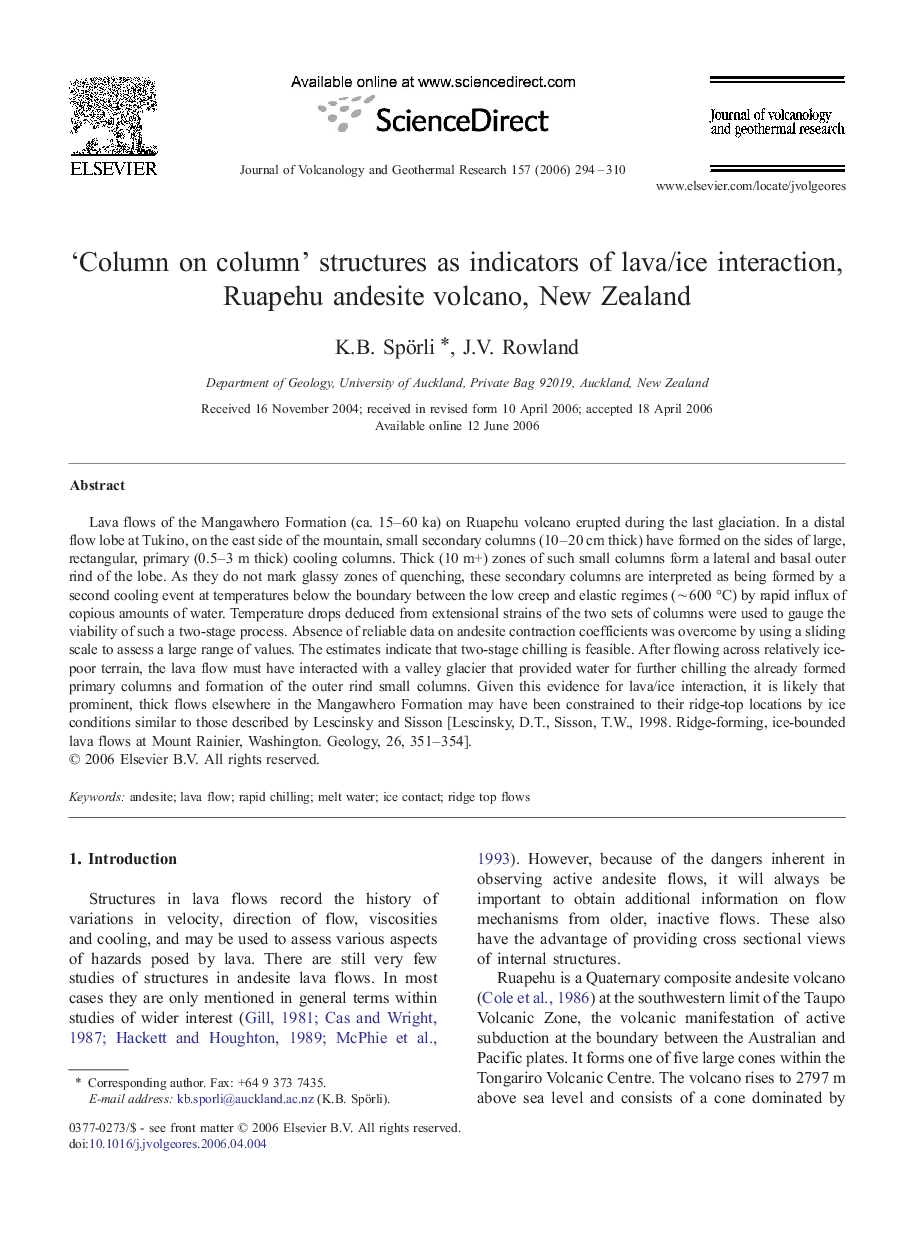| Article ID | Journal | Published Year | Pages | File Type |
|---|---|---|---|---|
| 4715344 | Journal of Volcanology and Geothermal Research | 2006 | 17 Pages |
Lava flows of the Mangawhero Formation (ca. 15–60 ka) on Ruapehu volcano erupted during the last glaciation. In a distal flow lobe at Tukino, on the east side of the mountain, small secondary columns (10–20 cm thick) have formed on the sides of large, rectangular, primary (0.5–3 m thick) cooling columns. Thick (10 m+) zones of such small columns form a lateral and basal outer rind of the lobe. As they do not mark glassy zones of quenching, these secondary columns are interpreted as being formed by a second cooling event at temperatures below the boundary between the low creep and elastic regimes (∼ 600 °C) by rapid influx of copious amounts of water. Temperature drops deduced from extensional strains of the two sets of columns were used to gauge the viability of such a two-stage process. Absence of reliable data on andesite contraction coefficients was overcome by using a sliding scale to assess a large range of values. The estimates indicate that two-stage chilling is feasible. After flowing across relatively ice-poor terrain, the lava flow must have interacted with a valley glacier that provided water for further chilling the already formed primary columns and formation of the outer rind small columns. Given this evidence for lava/ice interaction, it is likely that prominent, thick flows elsewhere in the Mangawhero Formation may have been constrained to their ridge-top locations by ice conditions similar to those described by Lescinsky and Sisson [Lescinsky, D.T., Sisson, T.W., 1998. Ridge-forming, ice-bounded lava flows at Mount Rainier, Washington. Geology, 26, 351–354].
